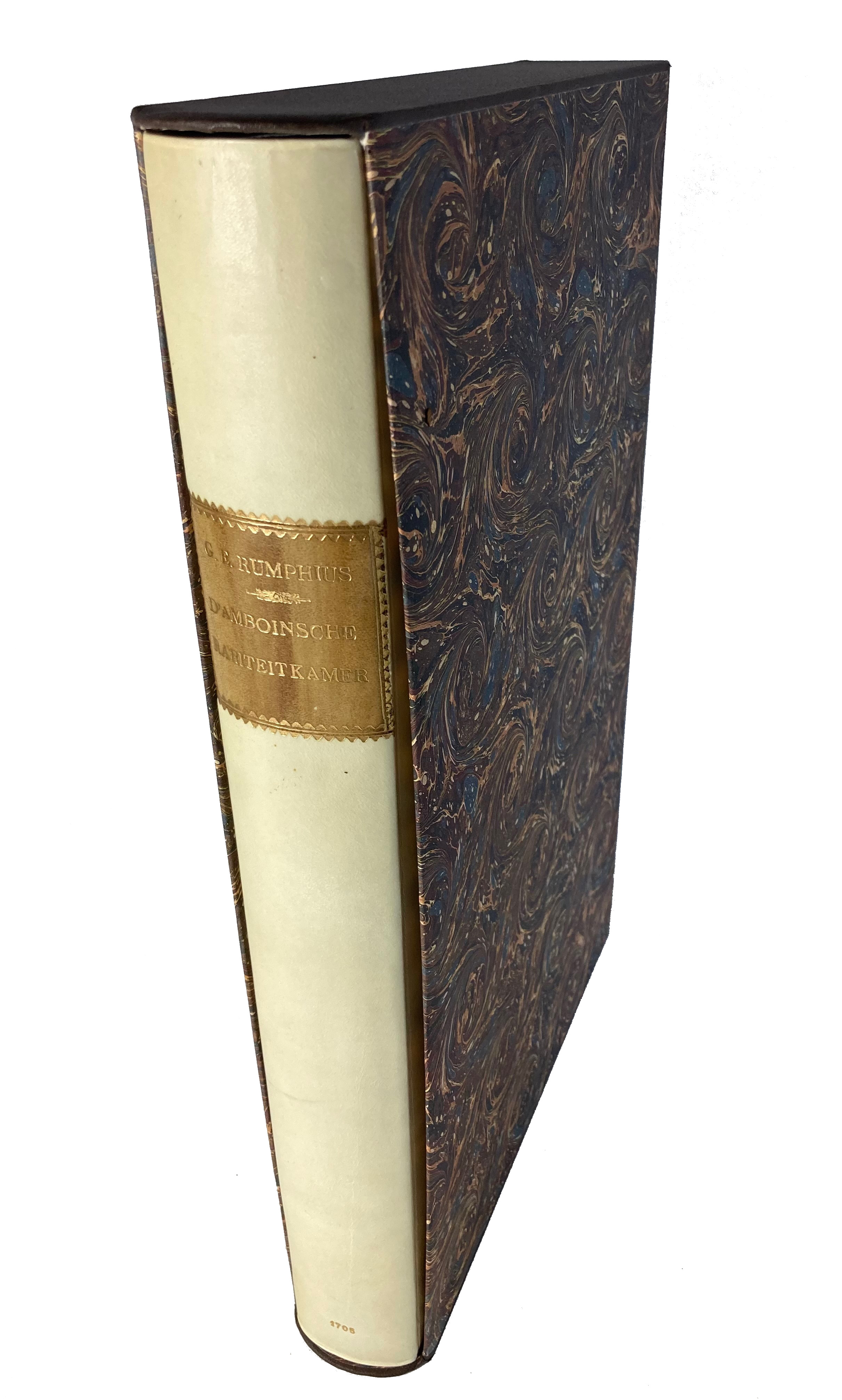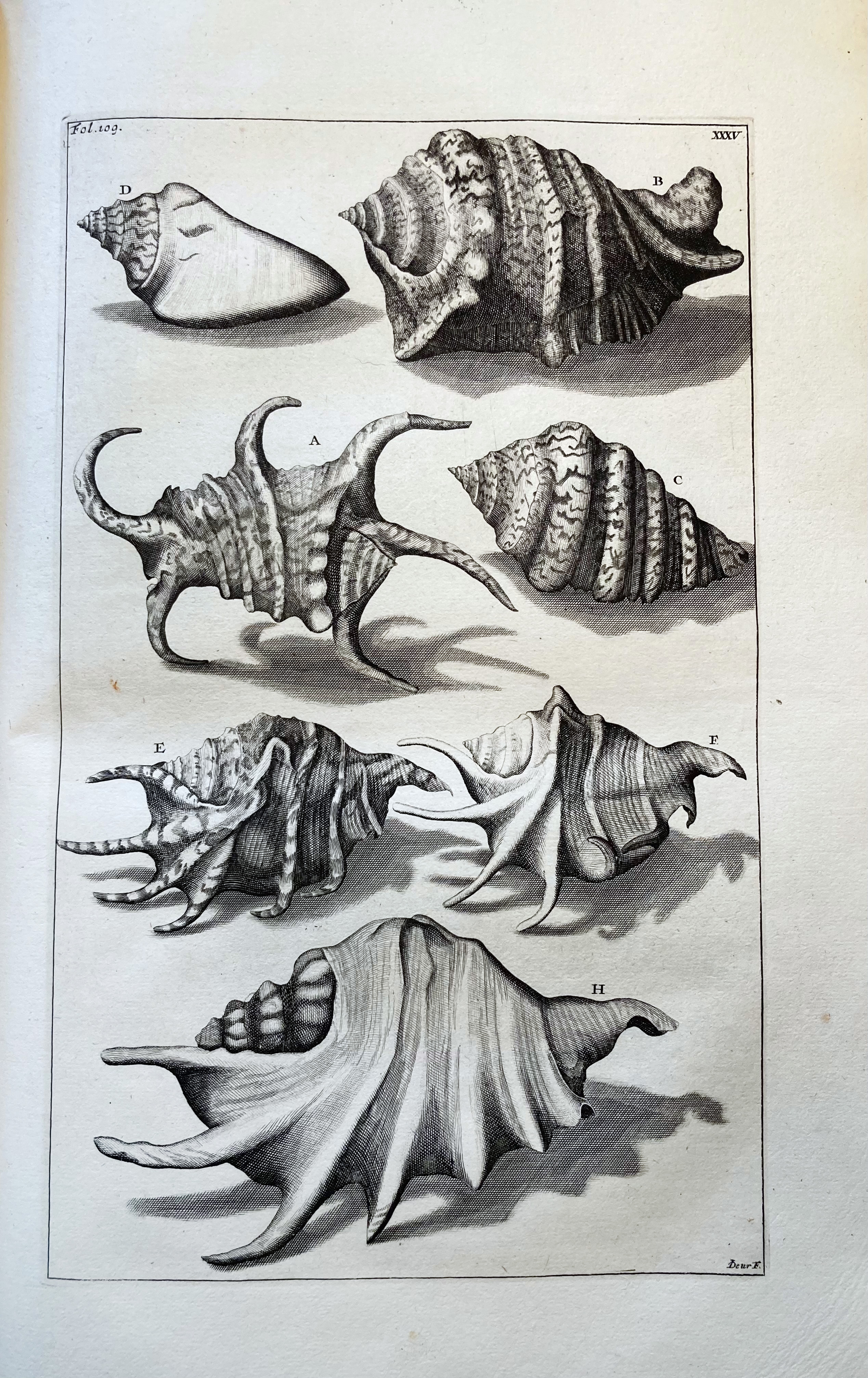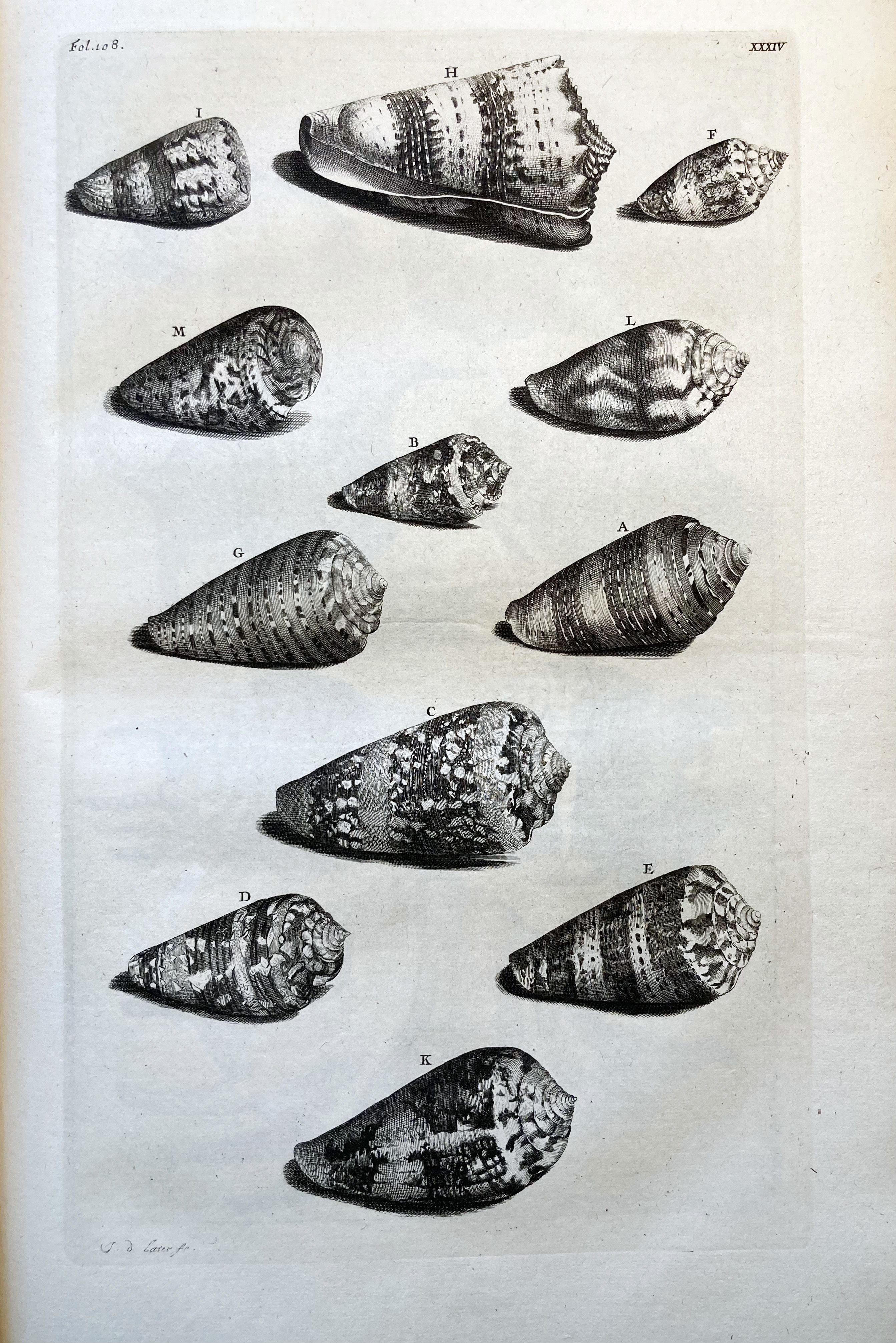Lot 1156
1156
RUMPHIUS, G.E. D'Amboinsche rariteitkamer, behelzende eene beschryvinge van allerhande zoo weeke als harde schaalvisschen, te weeten raare krabben, kreeften, en diergelyke Zeedieren, als mede allerhande hoorntjes en schulpen, die men in d'Amboinsche Zee vindt: Daar beneven zommige mineraalen, gesteenten, en soorten van Aarde, die in de Amboinsche, en zommige omleggende eilanden gevonden worden. Amst., F. Halma, 1705. 3 parts in 1 vol. (32), 340, (43) pp. W. engr. front., engr. ti-vign., engr. portr. of the (blind) author, 5 large fine engr. vignettes in text & 60 plain full-p. engr. plates depicting hard and soft shellfish, rocks, minerals and fossils. Fol. Fine mod. vellum bind. in slipcase.
First edition of this magnificent classical work on marine life of the Moluccas, in fact the first modern work on tropical fauna. It is generally understood a forerunner of the modern marine biology, by its exact descriptions and ecological data. Georg Eberhard Rumphius (1628-1702), nicknamed 'Plinius Indicus', was one of the great tropical naturalists of the seventeenth century. He went in service of the Dutch East-India Company as a merchant on the island of Ambon, sailing off in 1652, and became subprefect later. He started to research the flora and fauna of the island and its surroundings. He corresponded with many well-known scholars in the Indies and Europe. He became blind in 1670 but was able to continue his studies with the aid of an assistant for ordering his collections and annotations. The 'third book' contains also tinteresting remarks on Chinese porcelain. - Nissen, ZBI II, 3518; On it's publishing history, see at length: G.E. Rumphius. The Ambonese Curiosity Cabinet. Transl., ed., annotated, (…) by E.M. Beekman. (1999), lxxxvii-xciii; Landwehr, VOC, 591.Very clean copy w. ample margins in a tasteful modern binding; the prints being sharp and clean.€ 2000
result € 2400
Back




